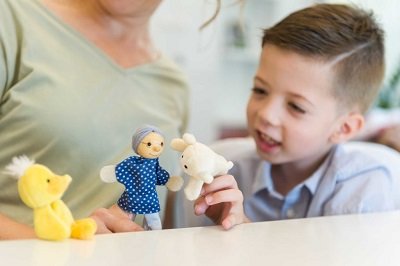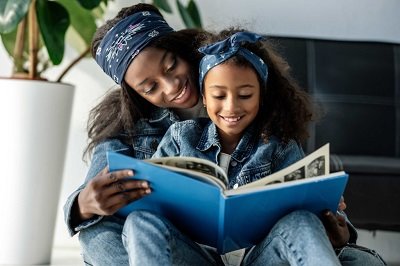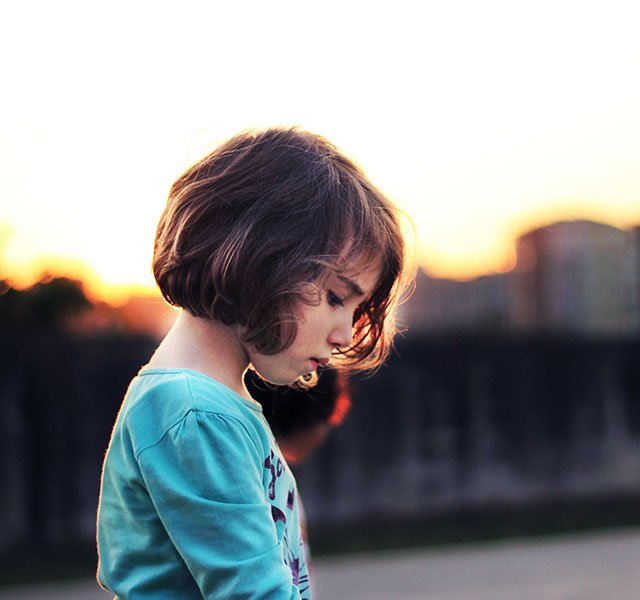No matter how old you are, losing someone you love is difficult. But children typically aren’t equipped with the emotional tools to process what happened or how to deal with loss. “Some kids get into fights and get angry. Others withdraw and decide not to participate in anything,” says Peggy Nielsen, MA, LPC, program manager of SandCastles Grief Support Program for Children and Families at Henry Ford Hospice. “It’s all over the board, but it’s all normal.”
Here are Nielsen’s three tasks to help grieving kids find peace:
1. Understand the Person Has Died
Whether you’re 3 or 53, understanding the permanence of death can be complicated. Young children, especially, have trouble understanding what death means. And for good reason: We use the word “die” for everything from ants that have been squashed to wildflower bouquets past their prime. Video games — a huge part of many kids’ lives — show players dying and popping back to life again right away. A few tips to help your kids grasp the concept of death:
- Use appropriate language. Young kids are concrete thinkers, so it’s especially important to use clear language. Instead of using terms like “passed away,” “expired,” “passed on,” or even “went to sleep,” use the word “died.” Then talk about what it means to be dead: Your heart doesn’t beat, your lungs don’t work and you stop breathing. That way, your child may be more likely to understand the concept.
- Share your beliefs. Beliefs about life, death and an afterlife can be confusing. So, for example, if you believe in heaven, you can spend some time talking with your child about what that looks like in your mind — and in his/hers. Together, you can then discuss what you believe happened to your loved one.
- Tell the truth. Kids need the adults in their lives to be honest and direct. Otherwise, they’ll fill in the details with their own story. Start simple, then answer their questions. Explain that there are three reasons people die:
- They were very, very, very sick.
- They were very, very, very old.
- They were hurt very, very, very badly.
The “very’s” are really important, emphasizes Nielsen. Otherwise, kids will think they’re going to die when they get a paper cut.
2. Understand the Feelings That Go Along with Grief
Kids must learn how to process their feelings. They have to understand that feelings are never wrong. It’s what you do with those feelings that makes a difference. So, for example, you might feel really frustrated when you see someone with her grandpa and you don’t have one anymore. What do you do with that emotion? Explain that it’s okay to be angry, but it’s not okay to kick your sister or the dog. A few things kids can do to address both the physical and the mental side of grief:

- Play. Kids express everything through play. “Puppet shows can be especially helpful since it’s often easier for a child to let a puppet do their talking for them,” says Nielsen. Playing and dancing to music that’s meaningful to them or to the person who died can also help children move through grief.
- Create. Allow your child to write or draw a picture, and instead of asking them questions about the drawing, just ask them to tell you about their picture. Writing, too, can help kids sort through difficult emotions.
- Act out. Grieving kids are feeling tons of emotions and they have to figure out what to do with them. “In our support groups, we have volcano rooms where people can go to release the physical side of grief,” says Nielsen. “There are activities like bubble wrap that they can pop, phone books they can shred or a scribble box where they can scribble in circles over and over again. The key is identifying ways they can get the anger and sadness out in a safe way.”
3. Understand How to Go on Living After the Person Has Died
It can be difficult to shift to a “new normal” after someone dies. Unfortunately, every child has to embark on a healing journey, which may include a whole lot of confusion and frustration, before they can return to enjoying life and honoring the person who died. Over time, children will realize that even though their loved one is not physically there, the person is still part of their lives. A few things you can do:

- Making a memory book. Artistic kids may want to create a scrapbook of their favorite memories featuring the person who died.
- Create rituals. Find ways to honor the child’s lost loved one — celebrate the person’s birthday, make a habit of sharing memories and delight in the person’s favorite meals, restaurants and activities. “Ask your child if she has thoughts about how to celebrate the deceased,” says Nielsen.
- Tell stories. Don’t be afraid to talk about the person who died, or to share your own memories and experiences with your child. In that way, you can help keep the person’s memory alive, not only for your child, but for yourself, too.
There’s no timeline for these activities. Instead, they offer ways to help children remember the person who died and keep their memory alive.
Creating a New Normal
Grief is a complex process. It’s unique to each and every individual and it doesn’t happen overnight. You have to ask your child what is helpful to him and what isn’t. Invite him to share his experiences with you and provide a safe space for him to express emotions and ask questions.
“When a child’s world is turned upside down, you still need to create some normalcy — some sense of comfort and safety,” says Nielsen. “Some kids will want to jump right in to their usual activities. Others might want to do things a bit differently. There’s no right or wrong.”
For more tools to help the children in your life navigate the death of a loved one, check out SandCastles, Henry Ford’s grief support program for children and families.
To find a doctor or therapist at Henry Ford, visit henryford.com or call 1-800-HENRYFORD (436-7936).
Peggy Nielsen is an experienced licensed professional counselor and is the program manager of SandCastles, which she founded in 1997. She was instrumental in growing Sandcastles to its current 8 sites, as well as creating the Healing Hearts Camp and then merging with The Moyer Foundation in 2009 to become Camp Erin Detroit. Nielsen is honored to be working in and furthering the field of children’s grief support and to have had the opportunity to build and grow these programs.



